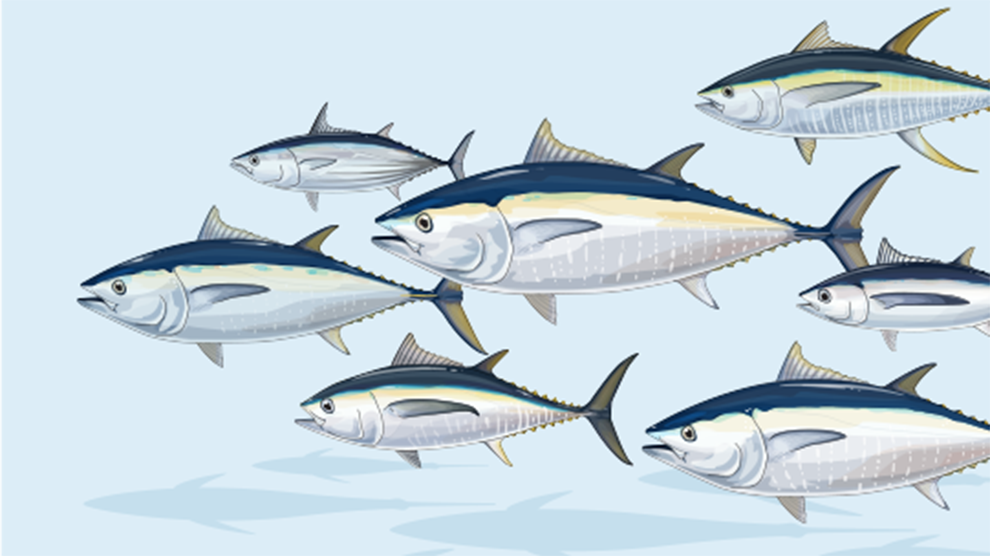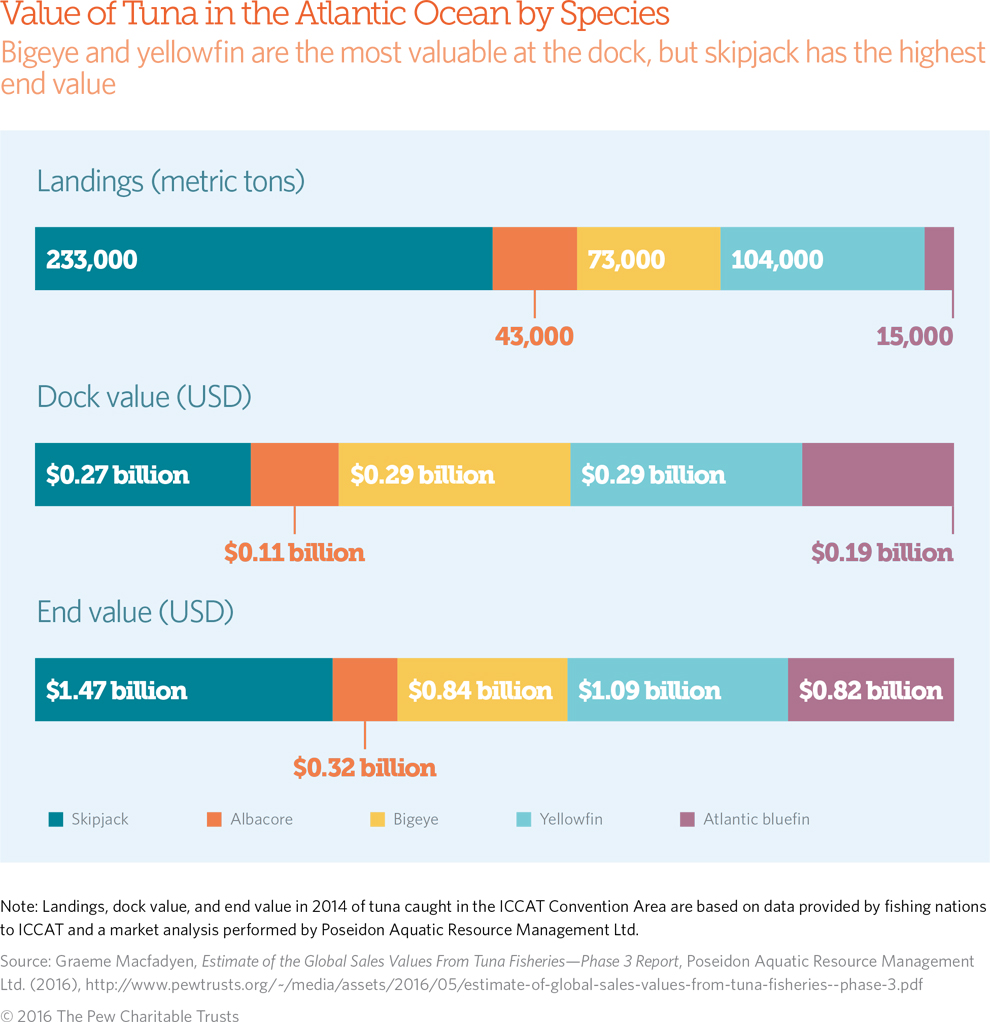Netting Billions: A Valuation of Tuna in the Atlantic Ocean

To preserve the economic and ecological value of Atlantic tunas, while sustainably managing tuna fisheries, ICCAT must focus on these actions.
Together, the seven most commercially important tuna species are among the most economically valuable fishes on the planet. Globally, commercially landed tuna and tuna products have a value of US$10 billion to $12 billion per year to the fishermen who target these species—and more than $42 billion per year at the final point of sale. These conservative totals do not account for noncommercial values of tuna, including those associated with sport fishing, other forms of tourism, and the ecosystem benefits of living tunas.
In the North Atlantic Ocean and the Mediterranean Sea, fishermen have targeted tunas for thousands of years. In recent decades, some of these efforts have grown into large, industrial fisheries that operate throughout the Atlantic, exploiting all tuna species, with a variety of gears. In 2014, parties to the International Commission for the Conservation of Atlantic Tunas (ICCAT) reported total landings of more than 460,000 metric tons for the primary commercial species. This tuna catch was worth over $1.1 billion to fishermen in the region and more than $4.5 billion at the final point of sale. These data are part of a broader analysis conducted for The Pew Charitable Trusts on the value of all tuna fishing worldwide.1
Commercial fisheries for tunas are among the most valuable fisheries in the Atlantic and the Mediterranean, supporting large industries in North and West Africa, Europe, and the Americas. Fishing vessels owned by international companies based in the European Union account for much of the tuna caught in the Atlantic, with significant amounts also taken by large regional fleets in Ghana, Brazil, and elsewhere. Many of these operations use purse seine nets or pole and line fishing to catch skipjack, juvenile yellowfin, and juvenile bigeye. Asian distant water fishing nations—including Japan and Taiwan, Province of China—use longline gear for adult bigeye, yellowfin, and Atlantic bluefin.
As is the case globally, skipjack and yellowfin have the highest end value of tuna species targeted in the ICCAT Convention Area, because of the high volumes of skipjack and moderately high volumes of yellowfin landed each year. (See Figure 1.) Longline-caught tuna (bigeye, Atlantic bluefin, yellowfin) fetches a much higher price by weight than tuna caught in purse seine nets (skipjack, yellowfin). In fact, as a result of the high price paid to longline fishermen, bigeye is the most valuable Atlantic tuna dockside, followed closely by yellowfin and skipjack.
Atlantic bluefin tuna is by far the highest-priced tuna by weight caught in the Atlantic, because of high demand in the sashimi market in Japan and other high-end outlets. The value of adult bigeye tuna per fish or per metric ton is growing, reflecting the increasing demand for this species in sashimi trade.
With so much money at stake, both in the region and as part of the global tuna economy, it is vital that parties to ICCAT take the necessary steps to protect the long-term sustainability of these fisheries. They must avoid making decisions based on short-term economic gain alone. ICCAT managers have a legal mandate to sustainably manage Atlantic tuna fisheries, and with the important role that tunas play in marine ecosystems in the Atlantic, they have an ethical responsibility to conserve these stocks.
To preserve the economic and ecological value of Atlantic tunas, while sustainably managing tuna fisheries, ICCAT must focus on:
- Implementing a rebuilding plan for the significantly depleted Atlantic bigeye stock, while fully rebuilding Atlantic bluefin by existing recovery deadlines. Full recovery of these ICCAT-managed species with the highest value per fish could generate increased wealth for fishermen in the region.
- Reducing the catch of juvenile tunas. This practice has contributed significantly to depletion of the bigeye stock, in particular, and is driving overfishing. Mitigating juvenile mortality to help depleted tunas recover could be an economic stimulus for the Atlantic region.
- Developing and implementing harvest strategies for priority stocks, including Atlantic bluefin, in a timely manner. These strategies set management objectives for a fishery and include pre-agreed actions that are triggered if predetermined reference points are breached. Properly designed, these steps would help provide economic stability for fishermen in the region.
- Instituting policies to manage and regulate the proliferation of fish aggregating devices (FADs) in the ICCAT Convention Area. Unsustainable catch of juvenile tunas around these floating devices contributes heavily to the overfishing of some species (e.g., bigeye tuna).
With these actions, managers for these tuna fisheries can work to remove short-term politics from decision-making. Doing so would secure strong financial returns from these fisheries, while ensuring the health of marine ecosystems.

Endnote
- Grantly Galland, Anthony Rogers, and Amanda Nickson, Netting Billions: A Global Valuation of Tuna, The Pew Charitable Trusts (2016), http://www.pewtrusts.org/tunavalue.











